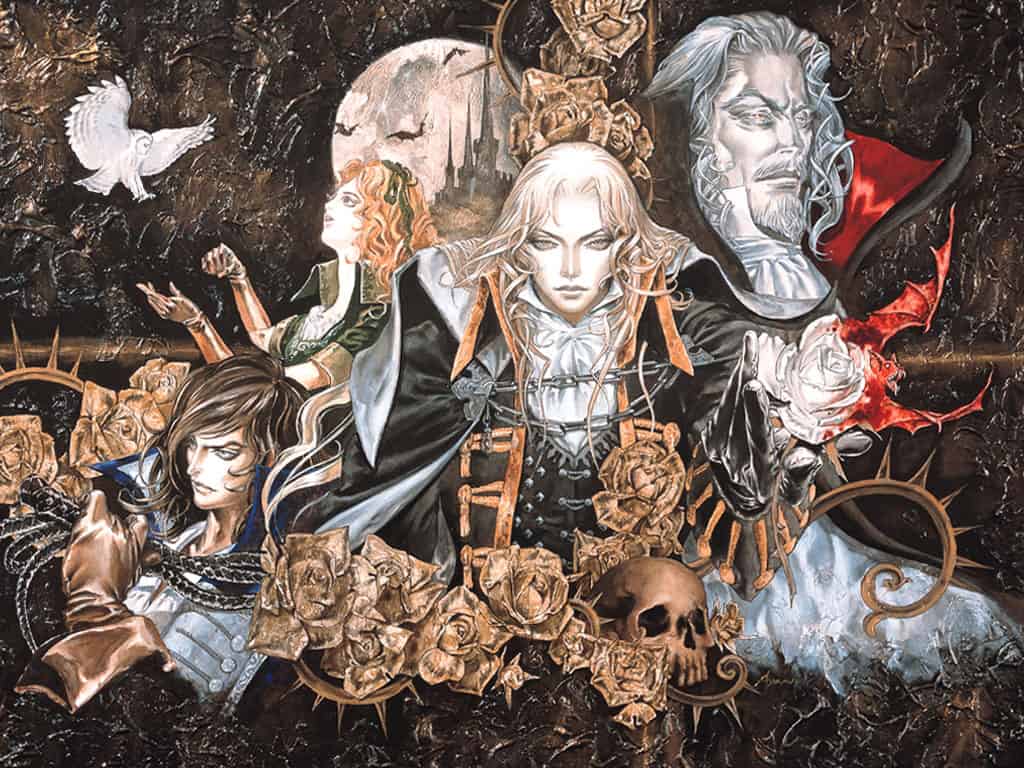The legendary Castlevania series has captivated gamers for generations. Castlevania’s story is the tale of two parties: Dracula and the Belmont family of vampire hunters. Whenever Dracula reemerges from his slumber, it’s up to the Belmonts to fend him off and save the world once more. The complex narrative of the entire Castlevania series can be confusing for new players. However, we have painstakingly organized each Castlevania game in chronological order as well as in release date order.
All Castlevania Games in Chronological Order
Castlevania: Lament of Innocence (2003)
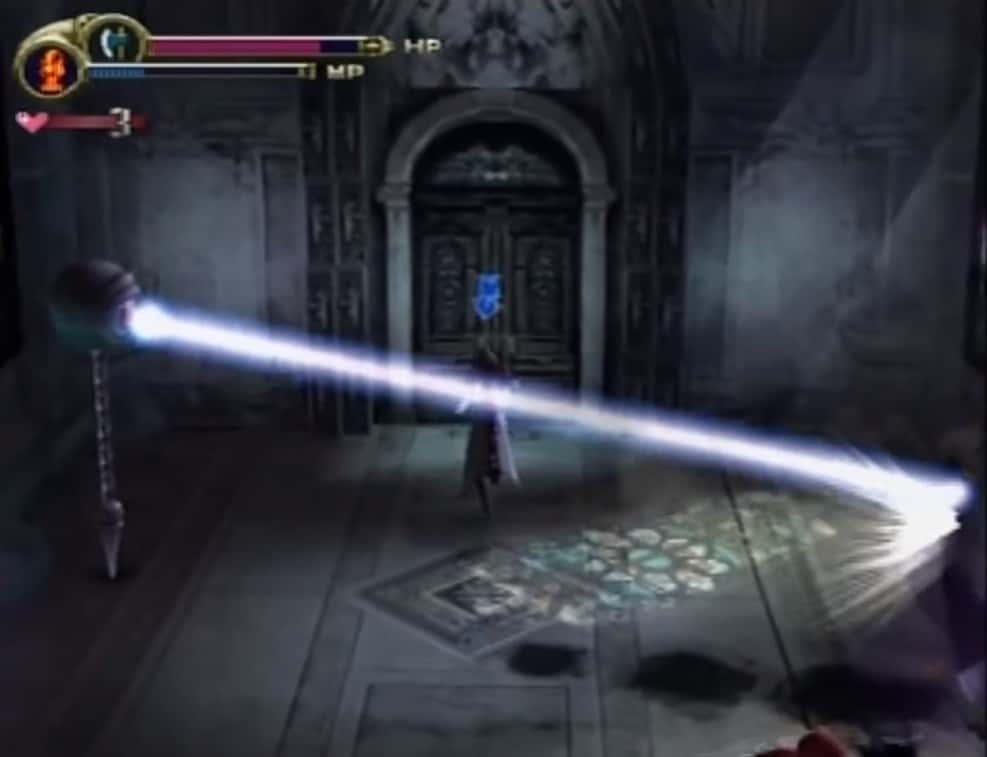
Lament of Innocence is the first game in the Castlevania timeline as far as the main timeline is concerned. It takes place all the way back in 1094 when vampires were nothing but folklore and hearsay. This game stars Leon Belmont, the first of the Belmont clan, as he tries to save his lover Sara from a vampire. On the way, he uncovers more about the people in his life than he bargained for.
The game takes place after the series’ shift to the “Metroidvania” style of game and expands on the concept but also eschews things like experience points and leveling up. Instead, players find Orbs and Relics that help them grow and can even unlock new abilities by performing certain actions in-game. It also took Castlevania into the third dimension and took plenty of cues from Devil May Cry. It was released in 2003 for the PlayStation 2.
Castlevania III: Dracula’s Curse (1989)
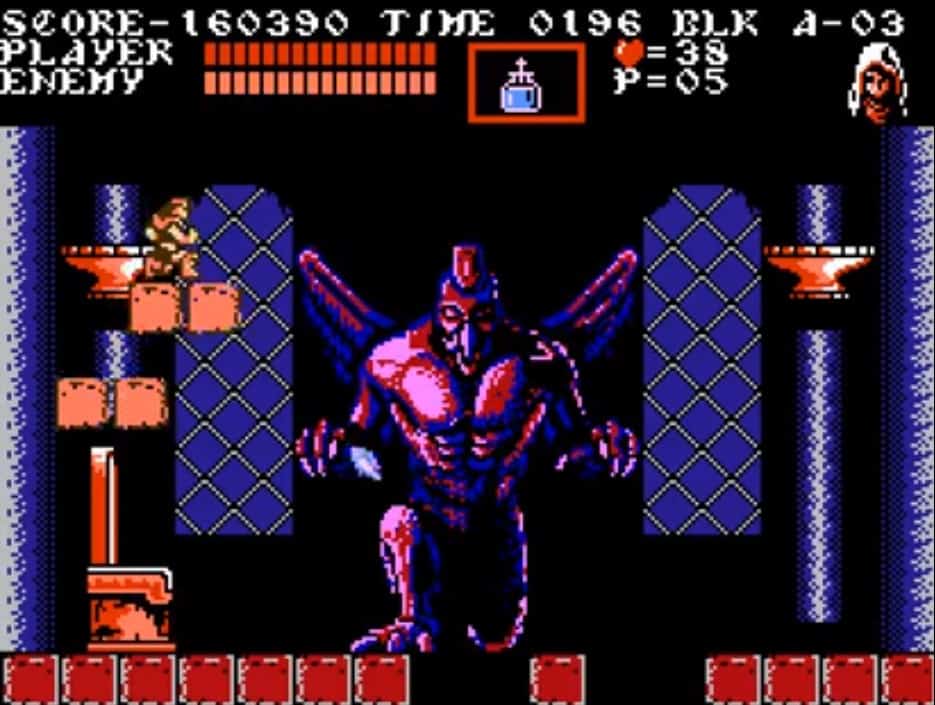
Dracula’s Curse introduces players to Trevor Belmont, one of Leon’s earliest descendants. The story takes place in 1476 and follows the events of Lament of Innocent as Dracula’s reign of terror is underway. Trevor enlists the help of magic-user Sypha and rogueish Grant to travel to Dracula’s castle and defeat him. This is also the first appearance of fan-favorite character Alucard, Dracula’s son.
The third Castlevania game introduces gameplay aspects that would become series mainstays. In particular, controlling multiple characters, branching paths, and character transformations. It was released on the NES in 1989 in Japan, 1990 in the United States, and 1992 in Europe.
Castlevania: Curse of Darkness (2005)
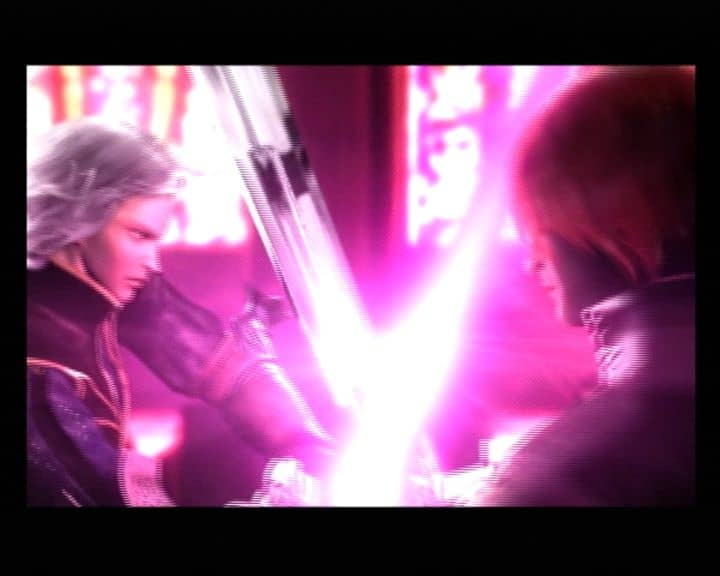
2005’s Curse of Darkness takes place three years after Dracula’s Curse and stars Hector, a defected devil forgemaster who once served Dracula and who now fights against him due to his lover’s death. His primary antagonist is Isaac, his fellow forgemaster, who hates Hector for defecting and blames him for Dracula’s defeat by Trevor’s hands. Curse of Darkness released for both the PS2 and, for the first time, the Xbox.
Since Hector is not a Belmont, he does not play like one. This game lets Hector equip numerous different weapons and sub-weapons, and takes place throughout the world, rather than being restricted to a castle. Players can also utilize “Innocent Devils,” small helper characters who can support Hector with additional damage, coverage against certain enemies, increase stats, and heal him. However, players can unlock Trevor Belmont as a playable character who plays exactly like a traditional Belmont, but in 3D.
Castlevania: The Adventure (1989)
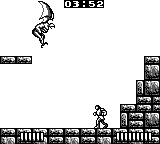
The first Castlevania to appear on a handheld system released in 1989 with Castlevania: The Adventure. The game stars Christopher Belmont, a heroic member of the Belmont clan who has killed Dracula. Gameplay-wise, the game ditches the sub-weapon system and instead lets players heal themselves with hearts. They can, however, upgrade their whip to shoot fireballs, but getting hit degrades the whip back to its original state. The game takes place in 1576.
Castlevania II: Belmont’s Revenge (1991)
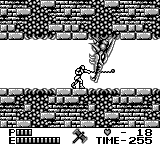
The second Game Boy Castlevania game continues Christopher’s story as he tries to save his son Soleil from Dracula following the events of the first game. The game re-introduces sub-weapons, but only the Axe and Holy Water/Cross, depending on the version you’re playing. Belmont’s Revenge took place 15 years after the first game in 1591.
Castlevania (1986)
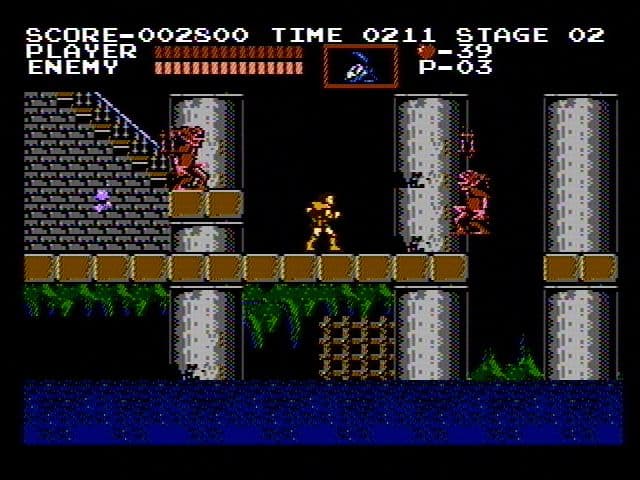
©Castlevania screenshot
The one that started it all, the original Castlevania introduced gamers to Simon Belmont and the Castlevania series as a whole. Castlevania released for the NES in 1986 in Japan and in 1987 in the United States. The first title started the series’ challenging, level-based system and established many of the tropes found in future titles.
These tropes include “wall chickens” and other hidden items in the walls, the whip as the Belmont’s primary weapon of choice, sub-weapons to assist the player in fighting foes, boss battles, and postgame hard modes/second quests. The game takes place in 1691.
Castlevania II: Simon’s Quest (1987)
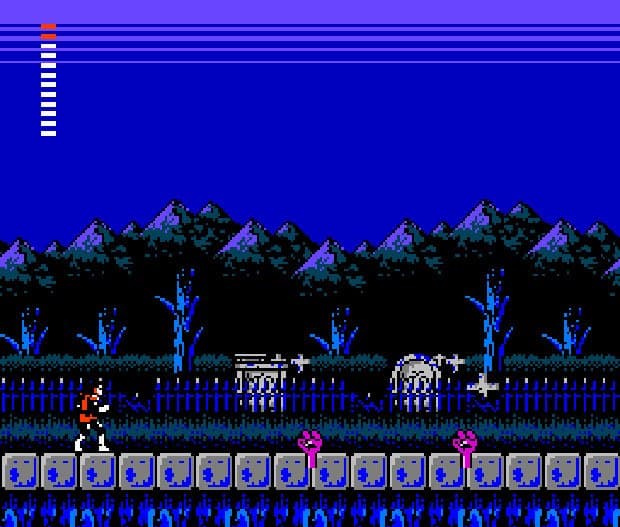
Simon returned a year later in Simon’s Quest, a direct sequel to the original Castlevania. This game takes place seven years after the first game in 1698, with a cursed and decaying Simon doing his darndest to prevent Dracula’s resurrection.
The game took an open-world approach and even had a day/night system. This is where the famous “What a horrible night to have a curse” phrase came from, which would trigger when the day turned to night. Enemies are more powerful at night and townsfolk hide from enemies at night and thus cannot assist Simon outside of daytime hours. This is the first appearance of the bouncing Diamond sub-weapon, also called the Ricochet Rock.
Castlevania: Harmony of Dissonance (2002)
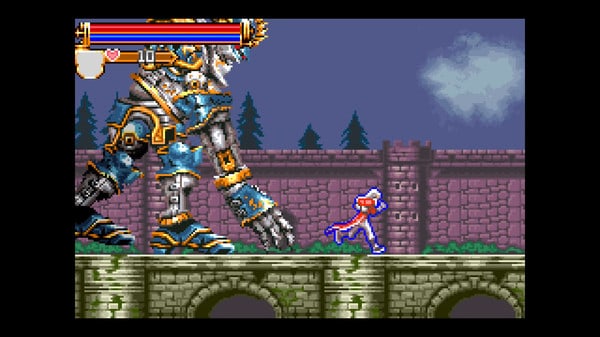
Simon’s grandson Juste Belmont stars in 2002’s Harmony of Dissonance for the Game Boy Advance. In this game, Juste seeks out his friend Maxim who goes missing for two years, and returns with news that a third friend, Lydie, was kidnapped. Harmony takes place in 1748.
Harmony of Dissonance continues the “Metroidvania” model as a sprawling 2D action RPG that takes place in one expansive environment. Players can empower Juste with more items throughout the castle, which also unlocks new areas of the map to explore.
Most important was the introduction of the dash mechanic. By pressing one of the GBA’s shoulder buttons, Juste could dash and match speedy enemies or confuse slow enemies. Juste can also use magic like in the PS2 Castlevania games and unlock new spells throughout the castle.
Castlevania: Rondo of Blood (1993)
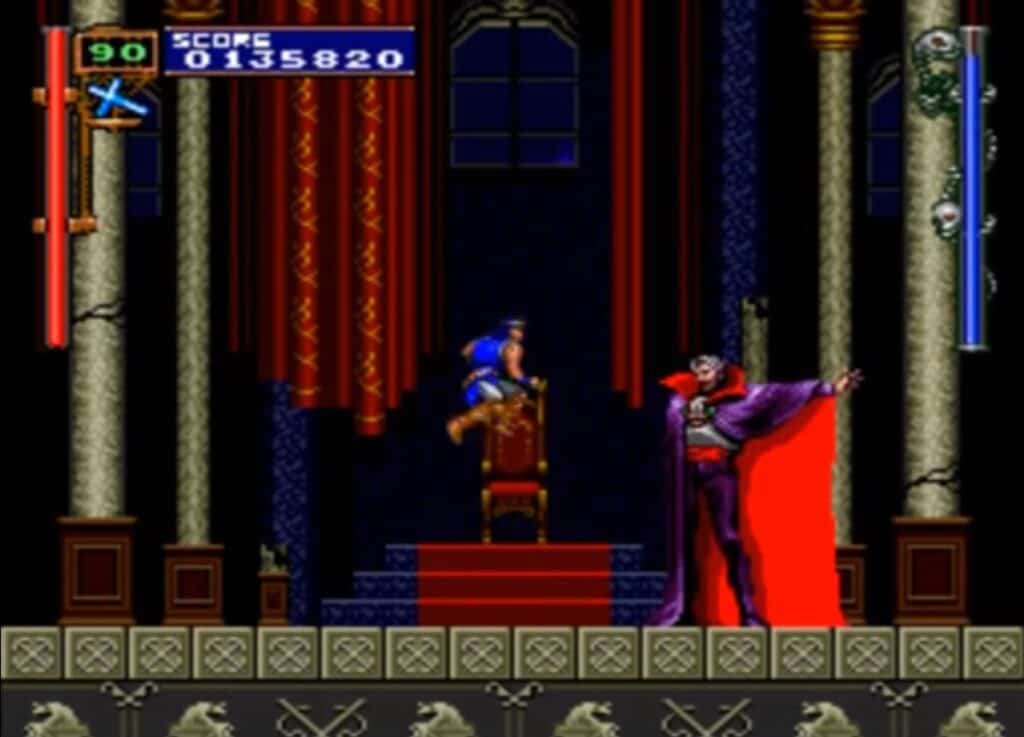
Rondo of Blood introduced players to Richter Belmont, one of the most powerful Belmonts in the bloodline. The game takes place in 1792 and stars Richter, who sets out to kill Dracula and save his fiancee Annette. Richter proves to be a very popular character in the Castlevania series and appears multiple times in different games.
As the first Castlevania game to be published on a CD, Rondo of Blood featured many firsts for the series, such as improved cutscenes, high-quality music, more challenging enemy AI, and improved graphics. This game also served as a turning point of sorts for the series. Now, the games would focus more on immersing players in the environment with improved visuals and memorable music. The game also introduced the “Item Crash” mechanic. This allows players to draw immense power from sub-weapons and defeat large amounts of enemies at the expense of hearts.
Rondo of Blood was remade for SNES as Dracula X, a reimagining of Rondo that takes place in a different timeline. The game still stars Richter and uses many of the same gameplay elements as Rondo but cannot be called a port since the game is drastically altered.
Castlevania: Symphony of the Night (1997)
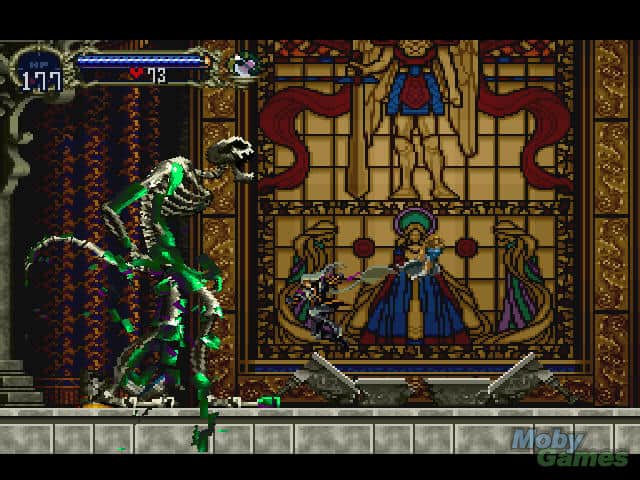
A landmark entry for the series, Symphony of the Night introduced the series’ iconic “Metroidvania” gameplay, combining the series’ traditional action platformer with RPG elements and open-world exploration. The entire game takes place inside Dracula’s Castle and follows Alucard, Dracula’s son, who awakes from his slumber in 1797. Through various twists and turns, Alucard unlocks the secrets of the castle, saves the good-hearted denizens of the castle, and defeats his father.
Critics herald Symphony of the Night as unquestionably one of the best and most important Castlevania games. Many even call it one of the greatest games ever made. The Metroidvania gameplay style was revolutionary for the time and its other gameplay mechanics like dashes, double jumps, equippable weapons and shields that affected Alucard’s appearance and resistances, and more were utilized by other 2D games in the future.
Castlevania: Order of Ecclesia (2008)
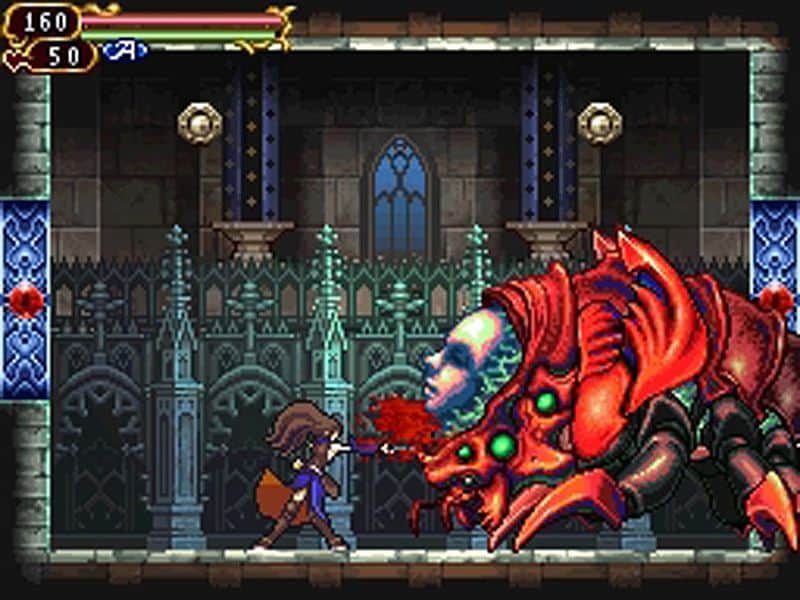
The next game in the chronological timeline takes place years after the events of Symphony and finds the world without Vampire Hunters of any kind. As such, the Order of Ecclesia stars the titular Order who is tasked with defeating Dracula. The game stars its first female protagonist, Shanoa, who is intended to be the vessel for a powerful glyph named Dominus. Shanoa progresses through forests and small dungeons before finding herself at Dracula’s Castle, where she must confront the vampire lord and defeat him.
The glyph system is Order of Ecclesia’s new gimmick. Players must find and unlock Glyphs to strengthen Shanoa and give her new abilities. Each new ability consumes MP, except for special Glyph Union abilities that consume hearts instead. The player must masterfully balance their MP and hearts to defeat enemies and progress through the game.
Castlevania: Bloodlines (1996)
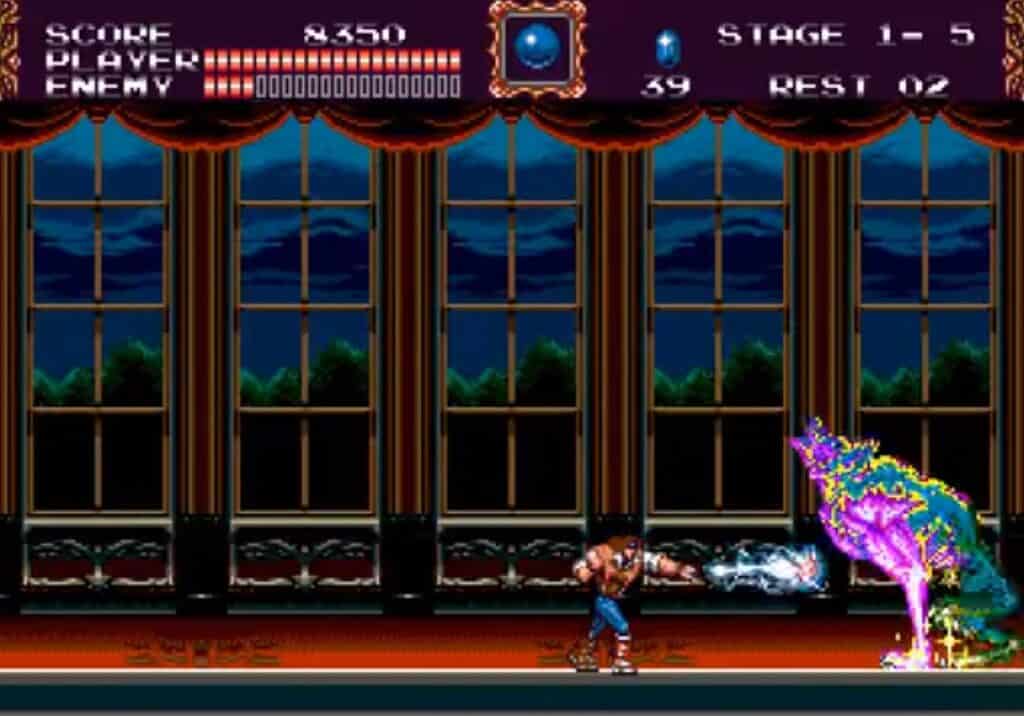
The only Castlevania game to appear on the Sega Genesis takes the game into the 1900s with Bloodlines. It stars John Morris, a Texan who wants to follow in his father’s footsteps and defeat Dracula. Morris wields the Vampire Killer whip, which can now be upgraded multiple times and affects his sub-weapons, too. Also playable is John’s friend Eric Lacarde, who wields a spear that was forged by Alucard.
Bloodlines takes advantage of the Genesis’ unique graphical and controller capabilities. It also changes the gameplay in a way never before seen in a Castlevania title. Both playable characters can use their weapons in multiple directions, including attacking downward while airborne. The game’s challenges also use unique effects that disorient the player, such as rotating stages and upside-down areas that force the player to play backward.
Castlevania: Portrait of Ruin (2006)
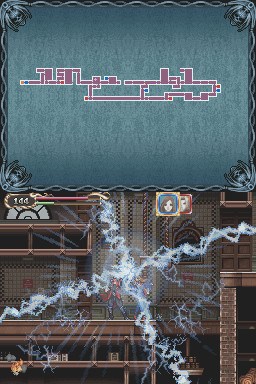
Set in 1944 during World War II, Portrait of Ruin continues the Morris family’s story with John’s son, Johnathan, and his childhood friend Charlotte. The duo must stop Brauner, a vampire, who revives Dracula’s Castle and wants to destroy the world.
The gameplay revolves around swapping between Jonathan and Charlotte who have different skills needed to overcome the diverse environments within the game. The protagonists traverse sandy Egyptian deserts, shady towns, forests, and more through paintings found in the castle in something straight out of Super Mario 64. The pair also use the new Dual Crash mechanic to deliver a devastating attack and kill multiple enemies.
Castlevania: Aria of Sorrow (2005)
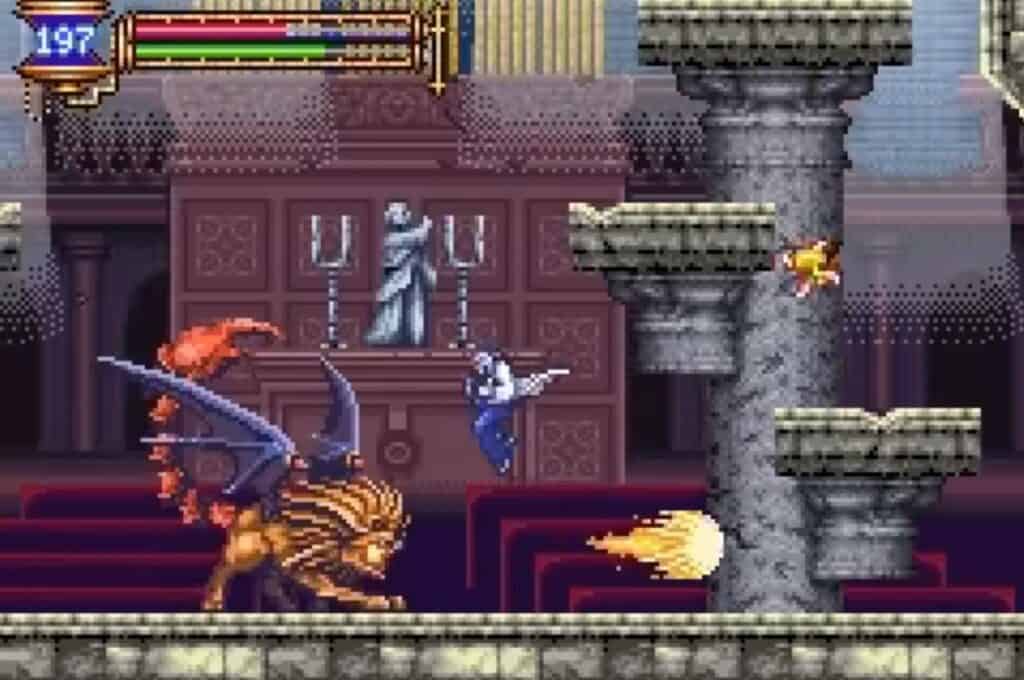
The first Castlevania in the 2000s, Aria of Sorrow debuted on the Game Boy Advance. The game stars Soma Cruz, an exchange student visiting Japan who is transported to Dracula’s Castle with his friend Mina in the year 2035. Together, the pair must find a way out of Dracula’s Castle before they perish.
Aria of Sorrow utilizes a new system called the Tactical Soul System, which allows Soma to claim the souls of defeated enemies and unlock new abilities with them. Souls can affect Soma’s sub-weapons, summon familiars to protect him, and give him power boosts. They also allow him to traverse new areas of the map thanks to unlocking double jumps, water walking, sliding, and more. Players can even trade souls a la Pokemon with two GBAs and a Link Cable.
Castlevania: Dawn of Sorrow (2005)
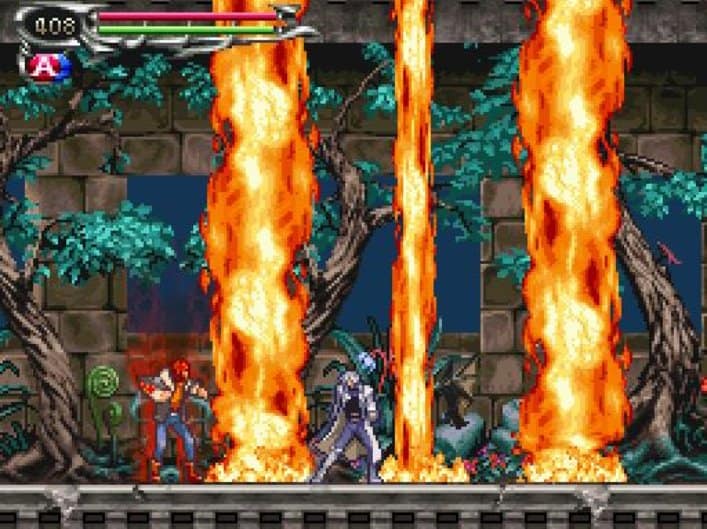
The final game (so far) in the official Castlevania timeline is 2005’s Dawn of Sorrow. Dawn of Sorrow takes place one year after Aria of Sorrow and further tells the story of Soma and Mina. They must fight off a dark cult that wants to revive Dracula using Soma’s power.
The Tactical Soul System returns and adds a new ability to power up souls by fusing together multiple copies of the same soul. To better utilize the DS’ touch screen, the game also features the Magic Seal System, which allows players to seal bosses and enemies by drawing the symbol on their touchscreen. Players can also interact with the overworld with the touchscreen by destroying walls and blocks, and controlling certain familiars.
Where Do Other Castlevania Games Fall Into the Timeline?
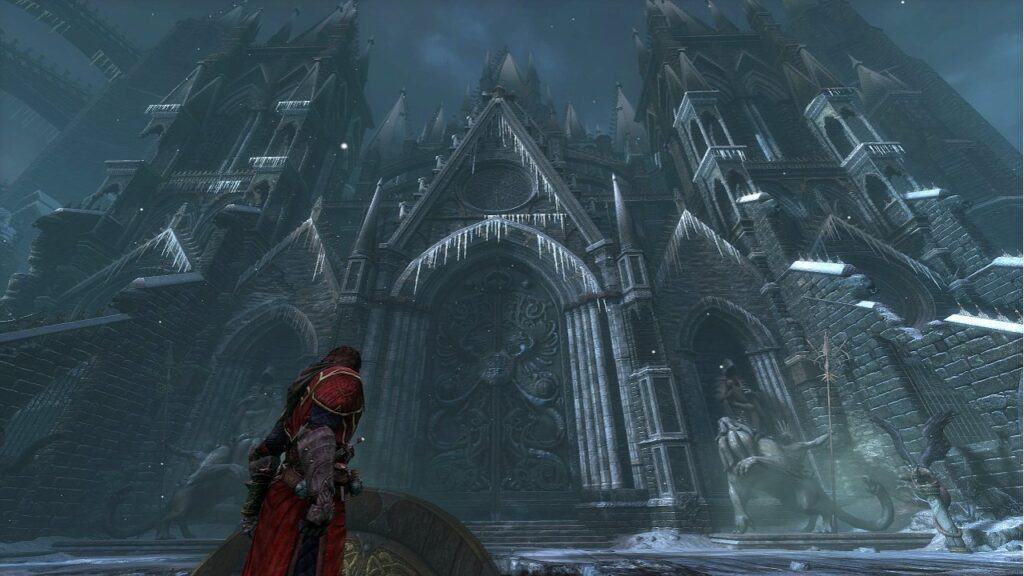
According to series creator Koji Igarashi, many other Castlevania games fall into alternate timelines. This includes the Lords of Shadow games, which exist in their own timeline, the Nintendo 64 Castlevania game, Circle of the Moon, Legacy of Darkness, and more.
All Castlevania Games in Release Date Order
- Castlevania (1986)
- Castlevania II: Simon’s Quest (1987)
- Castlevania: The Adventure (1989)
- Castlevania III: Dracula’s Curse (1989)
- Castlevania II: Belmont’s Revenge (1991)
- Super Castlevania IV (1991)
- Castlevania: Rondo of Blood (1993)
- Castlevania: Bloodlines (1994)
- Castlevania: Dracula X (1995)
- Castlevania: Symphony of the Night (1997)
- Castlevania Chronicles (2001)
- Castlevania: Circle of the Moon (2001)
- Castlevania: Harmony of Dissonance (2002)
- Castlevania: Aria of Sorrow (2003)
- Castlevania: Lament of Innocence (2003)
- Castlevania: Dawn of Sorrow (2005)
- Castlevania: Curse of Darkness (2005)
- Castlevania: Portrait of Ruin (2006)
- Castlevania: The Dracula X Chronicles (2007)
- Castlevania: Order of Shadows (2007)
- Castlevania: Order of Ecclesia (2008)
- Castlevania Judgment (2008)
- Castlevania Puzzle: Encore of the Night (2010)
- Castlevania: Harmony of Despair (2010)
- Castlevania: Lords of Shadow (2010)
- Castlevania: Lords of Shadow – Mirror of Fate (2013)
- Castlevania: Lords of Shadow 2 (2014)
- Castlevania: Grimoire of Souls (2019)
- Castlevania Anniversary Collection (2019)
- Castlevania Advance Collection (2021)
